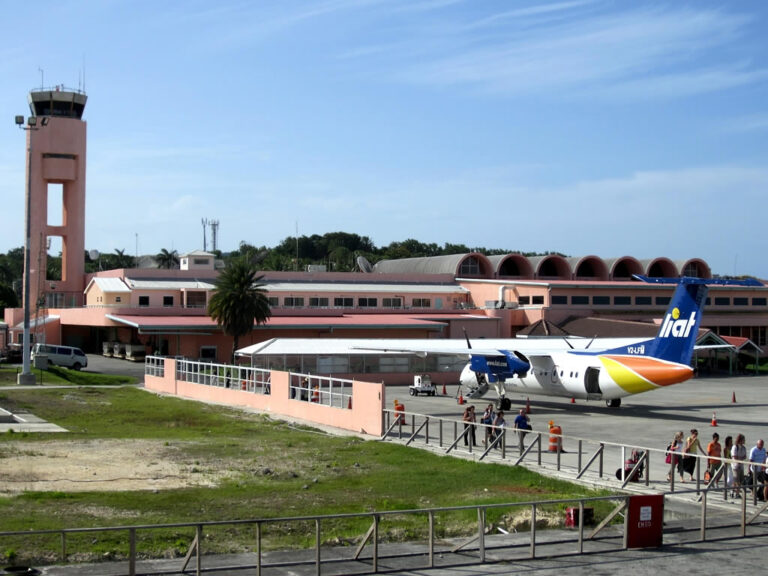
The Caribbean, known for its breathtaking beaches, vibrant cultures, and rich history, has long been a popular destination for international travelers. However, as the global tourism industry continues to evolve, the region’s tourism sector faces growing challenges. One of the most pressing issues is the high taxes and fees imposed on travelers and airlines, which have hindered regional travel and made it more expensive for locals to explore neighboring islands. Many industry experts, local governments, and tourism bodies are now calling for lower taxes to stimulate growth and ensure that the Caribbean remains competitive in the global tourism market.
The Caribbean’s reliance on tourism as a primary economic driver means that policies affecting the sector can have far-reaching consequences. High taxes on air travel, fuel surcharges, and airport fees are significant factors contributing to the high cost of flying within the region. This is especially true for local travelers who often face prohibitive costs when attempting to visit other Caribbean islands. For instance, a flight between two neighboring islands could cost as much as a long-haul international flight, a scenario that discourages frequent travel within the region.
These high travel costs have a direct impact on tourism revenues. When travel becomes unaffordable, both local residents and international tourists are less likely to visit multiple destinations within the Caribbean. This not only limits the economic potential of the region but also prevents the development of a more interconnected and collaborative tourism market. For example, a traveler visiting the Bahamas may find it expensive to continue their journey to Jamaica or the Dominican Republic, which limits opportunities for cross-destination tourism.
Proponents of tax reductions argue that lowering taxes would encourage more regional travel, thus boosting the overall economy of the Caribbean. Lower taxes could make it easier for local residents to travel within the region, allowing them to explore neighboring islands and spend money on local businesses, further stimulating growth.
Additionally, reducing taxes could lead to more affordable flights, which would encourage both regional and international tourists to visit multiple Caribbean destinations on a single trip. This could create a ripple effect, where an increase in regional travel leads to greater demand for accommodations, dining, and local attractions, benefiting not just airlines but the entire hospitality and service sectors.
One of the key benefits of reducing travel taxes is the potential for increased cooperation and integration among Caribbean nations. Historically, the Caribbean has been a collection of independent islands, each with its own unique culture and identity. However, by fostering greater regional travel, nations could begin to view themselves as part of a more cohesive and united Caribbean tourism market. Lowering travel costs could encourage multi-island itineraries, joint marketing initiatives, and shared tourism resources, allowing each destination to capitalize on its strengths while benefiting from the popularity of neighboring islands.
Regional integration could also facilitate the development of better transportation infrastructure. For example, airlines could introduce more frequent and affordable flights between islands, while ferry services and other modes of transport could be expanded. Furthermore, a more interconnected Caribbean could lead to joint efforts in areas like sustainability, where islands work together to promote eco-friendly tourism practices and share best practices in hospitality.
While the idea of lowering taxes on air travel seems promising, its implementation would require collaboration between Caribbean governments and airlines. Governments would need to recognize the long-term economic benefits of boosting regional travel and tourism and be willing to adjust tax structures accordingly. This might mean revisiting existing policies that impose high airport charges and fuel levies.
On the airline side, it’s essential that carriers offer more affordable routes within the Caribbean. Encouraging airlines to introduce budget-friendly options or incentivize travel between smaller islands could open up opportunities for increased mobility within the region. This could be particularly beneficial for smaller Caribbean nations that are often left out of mainstream tourism flows.
### A Model for Success: The European Union’s Approach
Looking to other regions for inspiration, the European Union has long used low-cost travel policies to foster increased mobility among its member states. Within the EU, citizens are able to travel between countries with little to no additional fees, fostering both tourism and business opportunities. A similar approach in the Caribbean could help to strengthen the region’s position as a tourism powerhouse.
European low-cost airlines, such as Ryanair and EasyJet, have thrived by offering affordable travel options, and Caribbean airlines could adopt similar models to create more accessible flights within the region. Encouraging intra-regional travel through lower taxes could unlock new markets and partnerships that benefit both local populations and visitors.
### Conclusion: A Bold Step for a Thriving Caribbean Tourism Industry
The Caribbean’s tourism industry has faced numerous challenges in recent years, from the economic impact of the COVID-19 pandemic to increasing competition from other global destinations. However, by lowering taxes and making regional travel more affordable, the Caribbean could revive its tourism sector, boost economic growth, and strengthen cultural ties across the islands.
In this dynamic and interconnected world, it is crucial for Caribbean nations to look inward and prioritize the growth of their own regional tourism market. By embracing a collaborative approach and lowering taxes, the Caribbean can soar to new heights, ensuring that its skies remain open, welcoming, and accessible to all.

